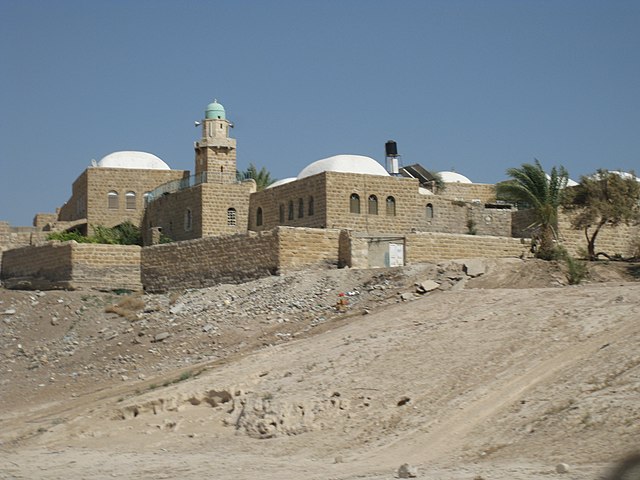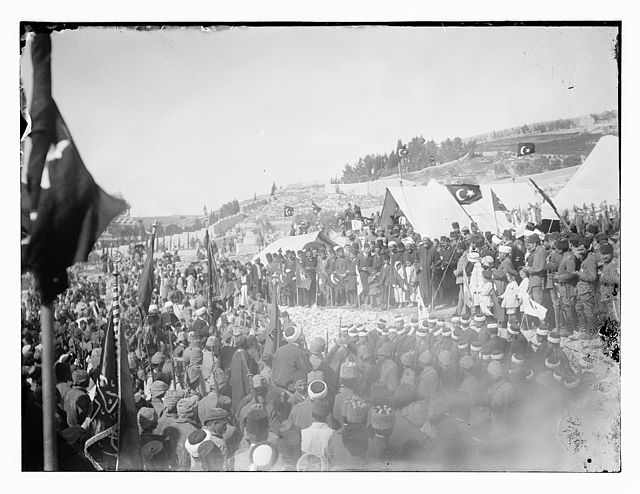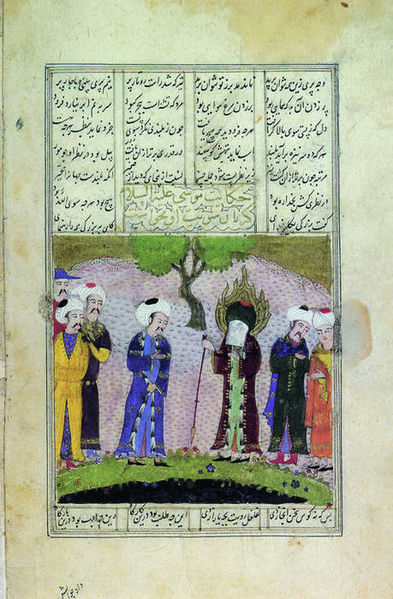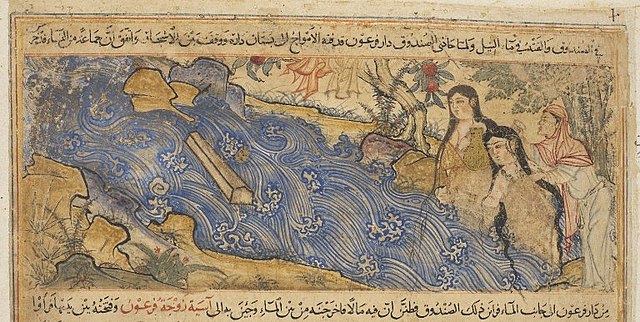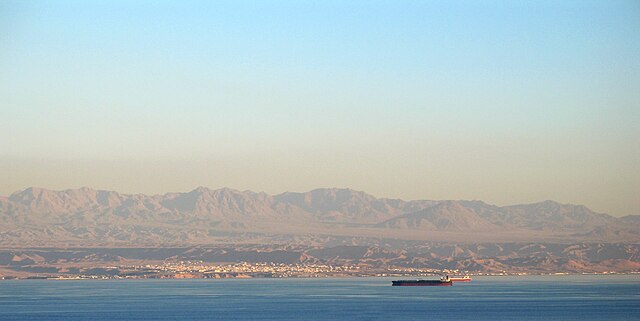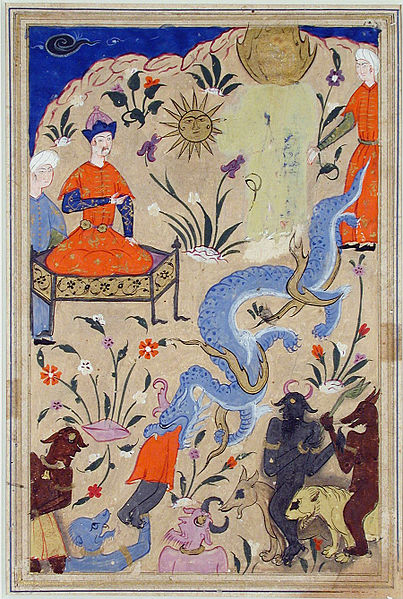Nabi Musa is primarily a Muslim holy site near Jericho in Palestine, where a local Muslim tradition places the tomb of Moses. The compound is centered on a mosque which contains the alleged tomb. It used to be the site of an eponymous seven-day-long religious festival that was celebrated annually by Palestinian Muslims, beginning on the Friday before Good Friday in the Orthodox calendar used by the Greek Orthodox Church of Jerusalem. Considered in the political context of 1920 as "the most important Muslim pilgrimage in Palestine", the festival was built around a collective pilgrimage from Jerusalem to what was understood to be the Tomb of Moses. A great building with multiple domes marks the mausoleum of Moses.
Nabi Musa, 2010
The maqam of Nabi Musa
Ottoman flags fly over the Nabi Musa procession for the last time, in 1917
Nabi Musa pilgrimage sets out from Jerusalem 1936
Mūsā ibn ʿImrān is a prominent prophet and messenger of God and is the most frequently mentioned individual in the Quran, with his name being mentioned 136 times and his life being narrated and recounted more than that of any other prophet. He is one of the most important prophets and messengers of Islam.
Moses in Islam
Asiya (depicted with long black tresses) and her servants, having finished bathing find baby Musa in the Nile. Their clothes hang in the trees while the river waves and crests are done in the Chinese style. Illustration from the Persian Jami' al-tawarikh
The Midian Mountains near Haql on the coast of the Gulf of Aqaba, which separates Midian in the northern part of the Arabian Peninsula and Ash-Shaam from the Sinai Peninsula in present-day Egypt
Pharaoh watches a serpent devour a demon in the presence of Musa; from a manuscript of Qisas al-Anbiya, c. 1540.

